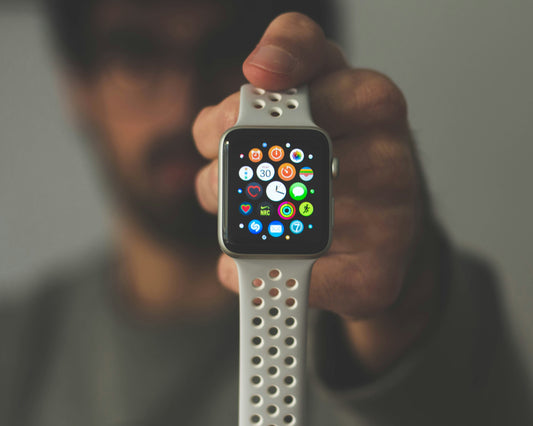You’ve probably seen the term “oxygen saturation” on a fitness tracker, pulse oximeter, or medical chart—but what does it actually mean? And why is it so crucial for your health, performance, and respiratory wellness?
In this article, we’ll break down the science of oxygen saturation (SpO₂), explain how it’s measured, what healthy levels look like, and what fluctuations might say about your lungs, heart, or overall physiology.
What Is Oxygen Saturation?
Oxygen saturation refers to the percentage of oxygen-bound hemoglobin in your blood relative to the total amount of hemoglobin available. In simple terms, it tells you how efficiently oxygen is being transported from your lungs to the rest of your body.
This metric is typically expressed as SpO₂ (peripheral capillary oxygen saturation), which is measured using a pulse oximeter—a non-invasive device that clips onto your finger, toe, or earlobe.
“Oxygen saturation is one of the fastest, most accessible ways to assess respiratory and cardiovascular efficiency.”
— World Health Organization (WHO)
How Does Oxygen Get Into the Blood?
When you inhale, air travels into the lungs, where oxygen diffuses across the alveoli (tiny air sacs) and binds to hemoglobin molecules in red blood cells. These cells then carry oxygen through the bloodstream to tissues and organs.
At the same time, carbon dioxide (CO₂) is picked up and carried back to the lungs to be exhaled. Oxygen saturation reflects this gas exchange efficiency.
What Is a Normal Oxygen Saturation Level?
| SpO₂ Range | Meaning |
|---|---|
| 95–100% | Normal for healthy individuals at sea level |
| 90–94% | Mildly low; may warrant monitoring in at-risk populations |
| Below 90% | Considered hypoxemia; medical evaluation recommended |
| Below 80% | Can be life-threatening without immediate intervention |
Note: People living at high altitudes or with chronic lung diseases may have lower "normal" baselines. Always consult a healthcare provider for personal interpretation.
Why Is Oxygen Saturation Important?
Your cells rely on oxygen to produce energy (via aerobic metabolism). Without enough oxygen:
- Brain and muscle function decline
- Fatigue and breathlessness increase
- Heart rate and blood pressure may rise to compensate
- In severe cases, tissue damage or organ failure can occur
Monitoring SpO₂ is especially important in:
- Chronic lung diseases (COPD, pulmonary fibrosis, asthma)
- Sleep apnea (nocturnal desaturation)
- COVID-19 or respiratory infections
- High-altitude sports or travel
- Post-surgical recovery and anesthesia monitoring
How Is It Measured?
Pulse Oximetry (SpO₂)
- Uses infrared light to detect oxygenated vs. deoxygenated blood
- Non-invasive, real-time, widely used at home and in hospitals
Arterial Blood Gas (PaO₂)
- A blood test that measures actual oxygen partial pressure
- Provides more precise data but requires a needle draw
What Can Affect Oxygen Saturation?
- Poor lung function (e.g., asthma, pneumonia)
- Obstructed airways (e.g., choking, sleep apnea)
- Heart conditions affecting blood flow
- High altitude (reduced atmospheric oxygen)
- Anemia (low hemoglobin levels)
- Cold extremities or poor circulation (can interfere with pulse oximeter readings)
How to Improve or Maintain Healthy SpO₂
- Breathe deeply and through your nose to optimize oxygen uptake
- Stay physically active to improve cardiovascular and pulmonary efficiency
- Avoid smoking or polluted environments
- Use supplemental oxygen if prescribed (especially with COPD or long COVID)
- Practice breath training (e.g., Buteyko or diaphragm exercises) to enhance ventilation efficiency
The Role of Technology
Smartwatches, fitness rings, and wearable monitors now track SpO₂ trends during:
- Sleep (to detect apnea or nocturnal dips)
- Exercise (to monitor oxygen demand and recovery)
- Illness recovery (e.g., tracking long COVID symptoms)
Examples include:
- Apple Watch Series 6 and up
- Garmin Pulse Ox
- Oura Ring
- Wellue and Masimo fingertip oximeters
Final Thoughts
Oxygen saturation is more than just a number—it’s a snapshot of how your respiratory and cardiovascular systems are performing in real time. Whether you're tracking fitness, managing a chronic condition, or recovering from illness, knowing your SpO₂ gives you insight into the one system you rely on with every breath.
Resources
- American Lung Association: www.lung.org
- World Health Organization – Pulse Oximetry Guidelines
- Mayo Clinic: Understanding Pulse Oximeters




